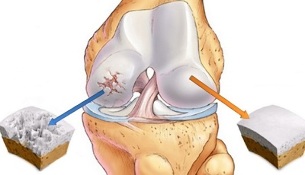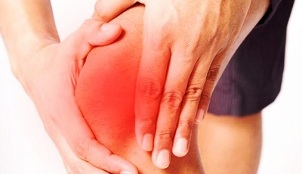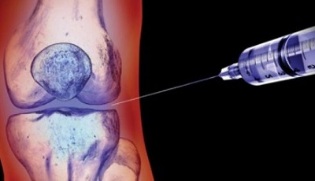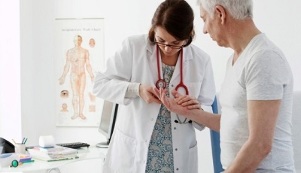
Osteoarthritis is a joint degenerative pathology accompanied by processes of cartilage tissue dystrophy. As the disease progresses, the joint sac, the ligament apparatus, the synovial membrane and the nearest bone structures also participate in the destructive process.
Spread of osteoarthritis
The majority of people with osteoarthritis are elderly. The disease after the age mark of 65 years is not only the most commonly diagnosed joint pathology, but also the main cause of disability with subsequent disability. In addition, in old age the patients are mostly women, but among young people most of the patients are men.
The incidence of osteoarthritis varies greatly from country to country. It is not yet possible to establish the reasons for the widespread dissemination of statistics.
Causes and risk factors
Osteoarthritis is a disease that can be primary or secondary. If there are no objective reasons for the development of the pathology, they speak of the primary type. If it was possible to identify the causes of osteoarthritis, they speak of a secondary type.
Secondary osteoarthritis can be caused by the following negative factors:
- traumatization of joint joints of different nature (frequent falls, sprains, bruises);
- chronic congenital tissue dysplasia;
- pathological changes in metabolic processes;
- various autoimmune pathologies;
- non-specific inflammatory processes in the joint area;
- some pathologies of the organs of the endocrine system;
- processes of degenerative-dystrophic type, chronic;
- various diseases accompanied by excessive mobility of the joints, combined with a weak ligament apparatus;
- presence of hemophilia;
- specific type of inflammatory processes.
In addition to the immediate causes that lead to the development of osteoarthritis, there are also predisposing factors that do not cause the disease itself, but may increase the risk of its development.

These include:
- is over 55 years old;
- overweight, which increases the load on the joints;
- excessive load on one joint or group in case of improper sports training, specific work that requires a long stay in one position;
- history of joint operations;
- heredity;
- hormonal changes in the female body in postmenopause;
- persistent hypothermia;
- pathologies of the spine that are not treated;
- Insufficient intake of useful micro- and macroelements with food.
Development Mechanism
The mechanism of development of osteoarthritis is well known. The cartilage that ensures normal contact of two bones is naturally smooth, without bumps and roughness, which helps maintain normal movement in the joints. In disease, the structure of cartilage changes, it becomes rough, defects appear on it, which reduce the effectiveness of natural sliding.Due to the acquired irregularities, the cartilage is gradually injured, in some places it begins to calcify, and in some places it ossifies. In this case, it is possible to release small particles that get into the joint fluid and can injure the surrounding tissues.
As the pathology worsens, the joint may go into a state of chronic subluxation, which will significantly impair its motor function.
Degrees
Doctors divide osteoarthritis into three main stages:
- I degree.It is characterized by the lack of a clear clinical picture. The patient may present rare complaints of pain in the affected joint, but usually does not consult a doctor. At the same time, there are changes in the ligament-muscle apparatus and in the joint fluid, but there are still no visible deformities.
- II degree.The symptoms of osteoarthritis become more pronounced. The pain is characterized as tolerable, but occurs regularly. The patient goes to the doctor because he notices a decrease in quality of life. A characteristic crunch can be heard in the affected joint. Changes in nearby muscle structures are observed as nerve conduction is impaired.
- III degree.Characterized by clear characters. The articular cartilage is very thin, cysts, foci of calcification or ossification can be found in it. The ligament apparatus becomes shorter, which leads to increased mobility in the affected area, which is accompanied by limitation due to a pronounced inflammatory process. The metabolism of the surrounding tissues suffers, which can lead to muscular dystrophy.
In any case, the patient will need to clarify the diagnosis with the treating physician. This is due to the specific course of the disease, which is characterized by stages of remission and exacerbation, alternating with each other.
Pain with disease

Osteoarthritis pain is the most common complaint in which patients go to the doctor. Their characteristic feature is their connection with the time of day, time, physical activity.
In most patients, the pain is exacerbated by walking, running or other physical activity directed at the affected joint. As soon as the load stops, the pain gradually subsides. Their development is explained by the fact that cartilage is no longer able to perform its cushioning functions.
At night, the discomfort most often occurs as a result of blood stasis in the veins. Another reason is the increase in intraosseous pressure during this period.
One of the main diagnostic criteria is the presence of so-called initial pain, which worries the patient at the moment when he has just started active movement. The initial pain usually subsides if physical activity continues. Their appearance is explained by the presence of joint deposits (detritus), which irritate the nerve endings. As soon as these deposits move away from the nerves, the pain disappears.
Symptoms
In addition to pain, doctors identify other signs of osteoarthritis by which a person may suspect pathology.
These include:
- Pain and crisp sound.A lump occurs mainly when a person has hypothermia. Initially, the pressure is barely audible, but as the disease progresses without therapy, it will become audible to those around.
- Decreased mobility. At an early stage in the development of the pathology there is no decrease in mobility. However, the longer the disease remains untreated, the stronger the restriction of movement in the joint. This is explained by the narrowing of the joint space and spasm of the nearest muscle structures.
- Joint deformity.It is characteristic of the late stage of osteoarthritis, but it is also an important indicator of the course of the disease. During this period it is already very difficult to cure the disease.
Which doctor treats osteoarthritis?
Who treats osteoarthritis? In most cases, several specialists are involved in the therapy. First of all, an arthrologist, a joint specialist, is involved. In addition, the patient will need to visit an orthopedist. If the disease is a consequence of an inflammatory process, it is recommended to visit a rheumatologist.
If necessary, other specialists may be involved during the treatment period. Most often you have to resort to the services of traumatologists, physiotherapists, masseurs, surgeons.
Diagnostics
Treatment of osteoarthritis of the joints begins only after confirmation of the diagnosis and establishment of the degree of pathology. First, the doctor interviews the patient in detail and conducts an examination. The presence of characteristic complaints and deformities suggests that there is a disease.
An X-ray of the affected joint is a mandatory way to confirm the diagnosis. If the disease affects the knee, then a picture of the knee is taken, if the pathology is found in the hand, then there are looking for radiological signs of the disease.Diagnosis with radiography does not always give sufficient results to diagnose the patient. In this case, it can be sent for MRI (this will allow to assess the condition of soft tissues and their involvement in the pathological process) or CT (this will allow to draw conclusions about the condition of bone and cartilage structures, the involvement of the mostclose anatomical structures in the pathological process).
Treatment

How to treat osteoarthritis of the joints? The choice of appropriate therapeutic technique depends on the severity of the symptoms and the stage of the disease.
The doctor chooses the treatment regimen after assessing the general condition of the patient and the course of the disease. Both conservative and surgical treatments can be used.
Medicine
How to treat a disease, if it is preferable not the operation, but the use of drugs?
Conservative therapy is suitable for patients only in the early stages of pathology and will include the use of three main groups of drugs:
- glucocorticosteroids- hormonal drugs that effectively relieve the inflammatory process during exacerbation, are injected into the joint cavity;
- non-steroidal anti-inflammatory drugs,which are injected and injected mainly into the muscles near the joint or directly into a vein. But doctors may also recommend pills, although this option for taking NSAIDs is undesirable due to the negative effect on the gastrointestinal tract;
- chondroprotectors- drugs from this group can reduce the destruction of cartilage tissue and improve regeneration, are especially effective in the early stages of the disease.
Surgical
How to cure osteoarthritis if the disease has gone far enough? In this case, conservative therapy will be ineffective and doctors may only recommend surgery to the patient.
Today, most joints are replaced. During the operation, the real joint is replaced with a prosthesis, which has all the functions of a healthy joint.
In some cases, opportunities for palliative therapy are provided, the main task of which is to reduce the load on the joint surfaces.
Exercise
In the early stages of the disease is treated not only with drugs but also with physiotherapy exercises. Exercise is an important step in therapy that helps maintain joint function and reduces the likelihood of further disease progression.
Depending on the severity of the pathology and the individual characteristics of the patient, the set of exercises is selected individually. The doctor must take into account the localization of osteoarthritis, which allows the most effective effect on the affected tissues.
Self-study without medical supervision is not recommended, especially in the initial stage. The exercises should be selected so that they are as smooth as possible, without sudden movements.
Exercise classes are only effective if the patient spends some time on the recommended complex each day.
Traditional methods

Many people with osteoarthritis refuse to use medication or surgery until the last minute. In this case, alternative medicines are used as substitutes for medicines.
The most commonly used plants in therapy are:
- kalanchoe;
- ginger;
- from;
- bay leaves;
- garlic;
- cinnamon;
- horsetail and others.
Used in the form of tinctures, decoctions, poultices for the affected area. It is important to keep in mind that a complete cure of the disease using only home-made recipes is impossible. It is best to combine traditional therapies with traditional medicine.
Prevention
What to do to reduce the likelihood of developing osteoarthritis in old age? Simple preventive measures are available to everyone.
Recommended:
- moderate daily physical activity: walking, cycling, doing simple exercises such as charging, etc.
- adherence to the basic principles of a healthy diet: eat often, but little by little, avoid fast food, overeating, heavy and fatty foods, eating a lot of spices;
- weight control: weight gain leads to increased stress on the joints, which can lead to osteoarthritis;
- timely treatment of chronic diseases leading to metabolic disorders;
- the use of vitamin and mineral complexes in case the amount of nutrients supplied with food is considered insufficient.
Difference between arthritis and osteoarthritis
Many people confuse arthritis and osteoarthritis because of the similarity of sound. However, these are completely different diseases.
Arthritis is not a dystrophy and degeneration in the joint tissues, but any inflammatory reaction that can develop in the joint cavity, regardless of its cause. Inflammation most often affects not only the joint, but also the closest muscles, bone and tendon structures. Arthritis pain is not related to physical activity, it can bother the patient even at rest and there is no crunch in the joints at all.

In most cases, it is impossible to distinguish arthritis from osteoarthritis independently, as the main symptom is pain and patients rarely have an idea of its characteristics for each of the pathologies.
It is better to entrust the establishment of an accurate diagnosis to the attending physician, so as not to make mistakes in the subsequent treatment and prevention of the disease.
Osteoarthritis is a serious pathology that can lead to damage if the patient does not consult a doctor in time. At the first signs of the disease, it is recommended to contact a specialist to confirm the diagnosis and choose the most optimal treatment.
If it is possible to infect the disease at an early stage of development, then it will certainly be possible to do so even without surgery, limited to conservative treatment.



































